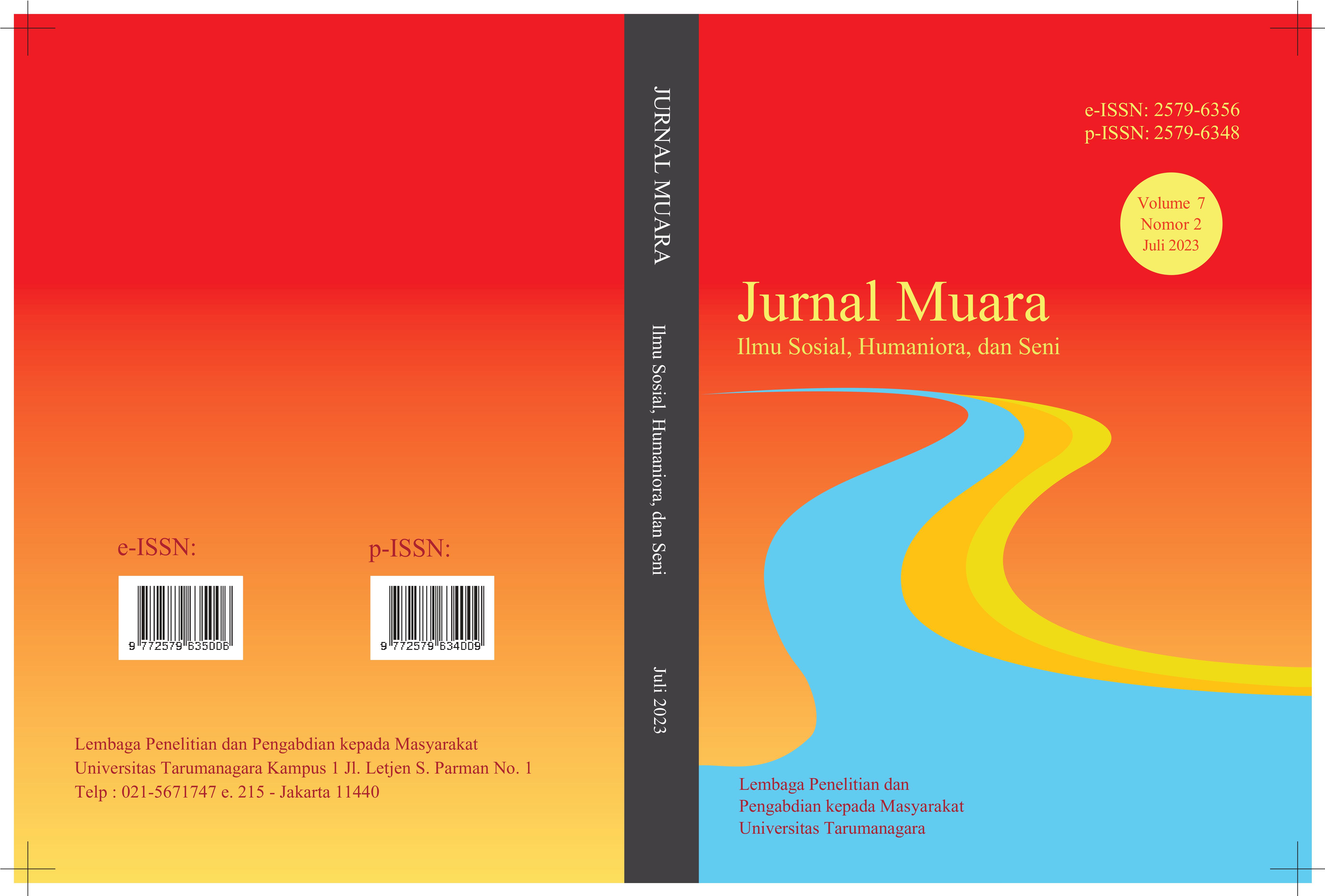Hubungan Antara Intensitas Penggunaan Media Sosial Instagram dengan Body Image pada Remaja Wanita
Main Article Content
Abstract
ABSTRAK
Terlepas dari bermanfaatnya media sosial Instagram dalam mempermudah interaksi dan komunikasi serta mengekspresikan diri, terdapat dampak negatif yang dihasilkan dari penggunaan Instagram. Salah satu dampak yang yang dihasilkan dari penggunaan Instagram yaitu permasalahan yang berkaitan dengan body image pada remaja wanita (Raychoudhury, 2021). Tujuan dari penelitian ini adalah untuk mengetahui hubungan antara intensitas penggunaan media sosial Instagram dengan body image pada remaja wanita. Penelitian ini dilakukan pada 300 partisipan remaja wanita dengan lingkup usia 12-19 tahun, memiliki akun Instagram, dan menggunakan Instagram setidaknya dalam seminggu terakhir. Metode yang digunakan dalam penelitian ini adalah kuantitatif non-eksperimental dengan teknik convenience sampling. Dalam penelitian ini, digunakan alat ukur Skala Intensitas Penggunaan Media Sosial (SIPMS) untuk mengukur variabel intensitas penggunaan dan Multidimensional Body-Self Relations Questionnaire-Appearance Scale (MBSRQ-AS) untuk mengukur variabel body image. Hasil penelitian menunjukkan bahwa hipotesis penelitian diterima, yakni bahwa terdapat hubungan antara intensitas penggunaan media sosial Instagram dengan body image pada remaja wanita. Korelasi tertinggi didapatkan pada body image dengan dimensi Durasi pada intensitas penggunaan (r = .434).
Kata Kunci: media sosial, body image
ABSTRACT
In addition to the usefulness of Instagram in interaction and communication as well as self-disclosure, there are negative impacts resulting from the use of Instagram. One of the impacts resulting from the use of Instagram is problems with body image in adolescent girls (Raychoudhury, 2021). The purpose of this study was to determine the relationship between the intensity of Instagram usage with body image in adolescent girls. This study was conducted on 300 female adolescent participants aged 12-19 years old that use Instagram at least in the past week. The method used in this research is non-experimental quantitative with convenience sampling technique. In this study, Skala Intensitas Penggunaan Media Sosial (SIPMS) was used to measure the intensity of Instagram usage and the Multidimensional Body-Self Relations Questionnaire-Appearance Scale (MBSRQ-AS) was used to measure body image. The results showed that the research hypothesis was accepted, namely that there was a relationship between the intensity of Instagram usage and body image in adolescent girls. The highest correlation was found in body image with the dimension of duration on the intensity of use (r = .434).
Keywords: social media, body image
Article Details

This work is licensed under a Creative Commons Attribution-NonCommercial-ShareAlike 4.0 International License.
This work is licensed under a Jurnal Muara Ilmu Sosial, Humaniora, dan Seni Creative Commons Attribution-ShareAlike 4.0 International License.References
Ardari, C. S. S. (2016). Pengaruh kepercayaan diri terhadap intensitas penggunaan media sosial pada remaja awal. (Skripsi tidak diterbitkan). Universitas Sanata Dharma, Yogyakarta.
Bearman, S. K., Presnall, K., Martinez, E., & Stice, E. (2006). The skinny on body dissatisfaction: A longitudinal study of adolescent girls and boys. Journal of Youth and Adolescence, 35, 217–229.
Boyd, D. & Ellison, N. B. (2007). Social network sites: Definition, history, and scholarship. Journal of Computer-Mediated Communication, 13(1), 210–230.
Carter, A., Forrest, J. I., & Kaida, A. (2017). Association between internet use and body dissatisfaction among young females: Cross-sectional analysis of the Canadian community health survey. Journal of Medical Internet Research, 19, 2-11.
Cash, T. F. (2000). MBSRQ users’ manual (third revision). The Multidimensional Body- Self Relations Questionnaire.
Cash, T. F. & Deagle E. A. (1997). The nature and extent of body-image disturbances in anorexia nervosa and bulimia nervosa: A meta-analysis. International Journal of Eating Disorders, 22(2), 107-126.
Cohen, R., Newton-John, T., & Slater, A. (2017). The relationship between Facebook and Instagram appearance-focused activities and body image concerns in young women. Body Image, 23, 183-187.
Gonzales, A. L. & Hancock, J. T. (2011). Mirror, mirror on my wall: Effects of exposure to Facebook on self-esteem. Cyberpsychology, Behavior and Social Networking, 1–2(14), 79–83.
Heryana, A. (2020). Desain Penelitian Non Eksperimental. Prodi Kesmas Universitas Esa Unggul.
Jones, D. C. (2001). Social comparison and body image: Attractiveness comparisons to models and peers among adolescent girls and boys. Sex Roles, 45, 645-663.
Meier, E. P. & Gray, J. (2014). Facebook photo activity associated with body image disturbance in adolescent girls. Cyberpsychology Behavior Social Network, 17, 199-206.
Raychoudhurhy, P. (2021, September 26). What our research really says about teen well-being on Instagram. Meta. https://about.fb.com/news/2021/09/research-teen-well-being-and-instagram/
Santrock, J. W. (2011). Life-span development. (13th ed.). McGraw-Hill.
Seetharaman, D. (2015, Oktober). Survey finds teens prefer Instagram, Twitter, Snapchat for social networks. http://blogs.wsj.com/digits/2015/10/16/survey-finds-teens- prefer-instagram-snapchat-among-social-networks/
Showkat, M. (2017). Non-probability and probability sampling. Communications Research.


